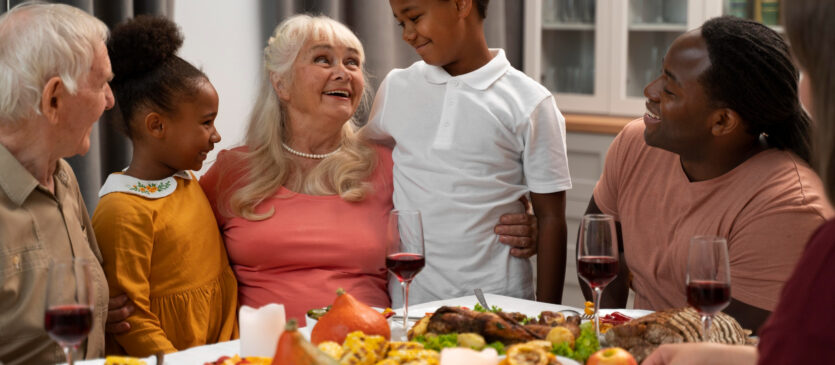Thanksgiving is a time for gratitude, togetherness, and delicious feasts. However, for elderly care recipients, the holiday season can pose unique challenges. By considering their specific needs and making thoughtful preparations, you can ensure that Thanksgiving is enjoyable and stress-free for everyone involved.
Understanding the Challenges: Many elderly individuals face mobility issues, dietary restrictions, or health concerns that can impact their ability to fully participate in traditional Thanksgiving festivities. It’s crucial to be aware of these challenges to create an inclusive and comfortable environment.
Adapting Traditions:
- Seating Arrangements: Arrange seating that provides easy access for those with mobility aids and ensures a comfortable and supportive place for all guests.
- Accessible Decor: Consider the placement of decorations to avoid obstructing walkways and causing hazards. Opt for fall-themed décor that is visually appealing yet safe.
Tailoring the Menu:
- Dietary Considerations: Take into account any dietary restrictions or preferences of elderly care recipients when planning the Thanksgiving menu. Offer a variety of options that cater to different needs.
- Easy-to-Eat Options: Prepare dishes that are easy to handle and chew, accommodating any dental concerns or challenges with utensils.
Creating a Comfortable Environment:
- Temperature Control: Keep the living space comfortably warm, as older individuals may be more sensitive to cold temperatures.
- Quiet Spaces: Designate quiet areas where individuals can retreat if the festivities become overwhelming. Offer a cozy spot with soft seating for relaxation.
Encouraging Participation:
- Memory Sharing: Foster a sense of connection by encouraging the sharing of Thanksgiving memories. This can be a meaningful way for elderly care recipients to contribute to the celebration.
- Adaptive Activities: Plan activities that cater to various abilities, such as storytelling, simple crafts, or listening to favorite music.



Leave a Reply